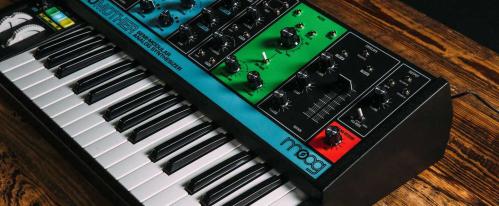We take a deep dive into the new Korg Modwave and find out how it compares to one of the best Korg synths available today
In this blog we’re going to take a look at some different types of sound synthesis and compare the all-new Korg Modwave with the Korg Wavestate and some classic Korg machines from the past.
Korg Modwave
Modwave is the latest release from Japanese audio giants Korg - a company renowned for its constant innovation since releasing the miniKORG in 1973.
The Modwave is a wavetable synthesizer based on the Korg DW-8000 - an iconic machine first released in 1985 and used by artists such as Depeche Mode and Dream Theatre. But what is wavetable synthesis?
Dan Phillips, Manager of Product Development at Korg R&D, explains a little more about the synthesis architecture of the Modwave:
“Its oscillators play single-cycle waveforms. These waveforms are grouped into sets called "wavetables," which let you smoothly transform from one single-cycle waveform to another.
Wavetables, when played without any modulation, are pretty static - just like analog waveforms. But, compared to samples, there are many more options for altering wavetables in real-time.”
The Modwave boasts 32-voice polyphony, with four simultaneous wavetables per voice in a single Program. Each Layer has three dedicated effects, as well as a master reverb and a master parametric EQ.
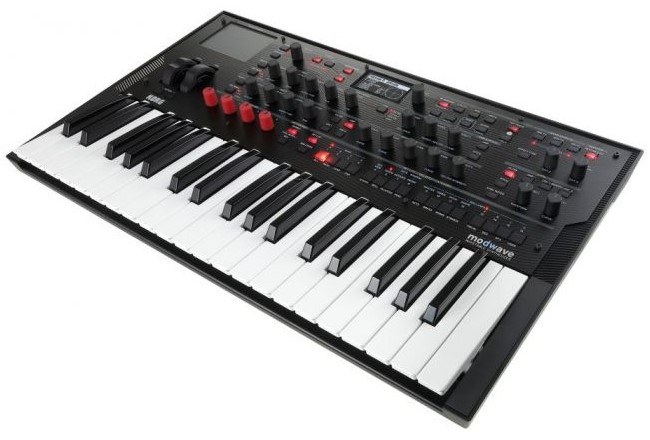
Workflow
At first glance, the Modwave seems pretty similar to the Wavestate - the souped-up Wavestation that first became available at the start of 2020.
The overall workflow and positioning of the filter section, envelopes, LFOs and effects is similar, as well as featuring a sizable overlap in the built-in sample library.
The Randomize button makes a welcome return too, allowing for a plethora of new sounds to be generated intelligently for you to play with and expand on.
Beyond this, however, is where things start to get a bit different.
Oscillators
The oscillator section on the Modwave is vastly different to that of the Wavestate.
The Modwave benefits from more detailed oscillator controls - although samples can no longer be selected for each sequence-step as on the Wavestate, the use of Wavetables allows you to move seamlessly through single-cycle waveforms regardless of the sequencer (which has also moved now, too).
Sequencing
Motion Sequencing 2.0 is featured on the Modwave - an evolution from the Wavestate’s Wave Sequencing 2.0. By utilising each individual lane on the Modwave sequencer, users can now sequence modulations in timing, pitch, shape and four sets of step-sequencing values. The step-order can be randomised upon each playback, with modulation added at each loop point in addition to this.
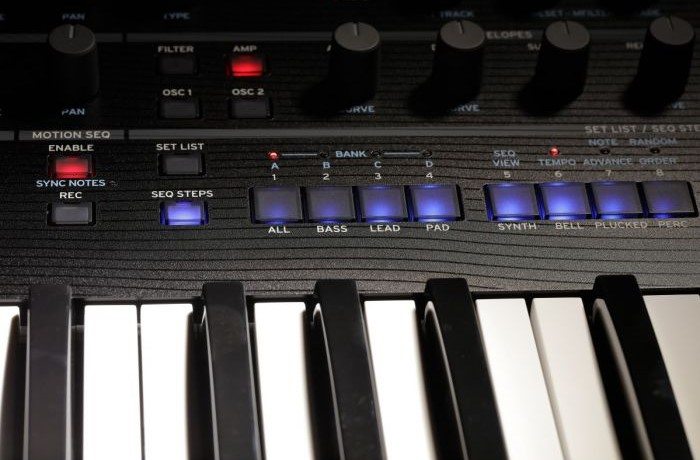
Each single-cycle waveform on the Modwave has bi-timbral settings and effects, with over 200 wavetables each containing up to 64 waveforms. Korg says that by using the modifiers, 13 Morph types, and A/B Blend, over 230 million wavetable variations are available - and this is before you might have considered uploading your own custom wavetables, too.
Kaoss Physics
One of the most exciting new features on the Modwave is the Kaoss Physics Pad. Situated on the top left of the control panel, the Kaoss Pad allows for parameters to be controlled by rolling a ball across a surface displayed on the screen.
With each axis acting as a wall, the ball can be thrown or dragged to offer realtime sound processing - better still, any modulation destination can be controlled in this way and set-up with a trigger source (such as Gate + Damper).
Users are able to edit the ‘surface’ of the Kaoss Pad, editing parameters such as Friction and thus generating different behaviours from the ball. This leads to a deep, immersive playing experience that is not possible with traditional joysticks.
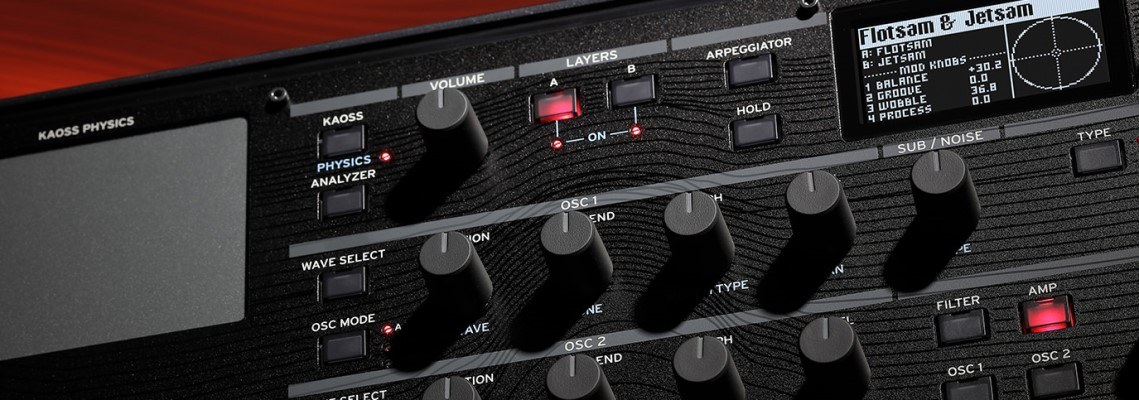
This synth truly has unlimited potential, and with the added modulation, you can lose yourself for hours in its capabilities.
So, that’s our Korg Modwave review - and hopefully wavetable synthesis explained - but what about the Wavestate?
Korg Wavestate
The Korg Wavestate is a Wave Sequencing Synthesizer, and relies fundamentally on subtractive synthesis through the use of samples. This is the main difference between the Wavestate and the Modwave, and it leads to pretty different results in terms of the sounds you can make.
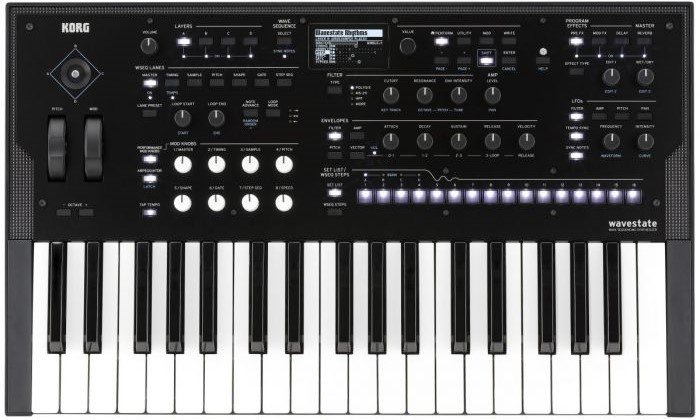
Whilst the Wavestate might not be as flexible when it comes to altering the fundamental timbres of samples, its strength lies in its ability to combine samples in completely distinctive ways.
When the original Wavestation was released in 1990, it was lauded for its Wave Sequence controls, with each having a duration, a sample, and a pitch.
With Wave Sequencing 2.0, users are able to modulate Lanes on the sequencer for sounds that respond to realtime control, allowing samples to be played in a list as the synthesis parameters are modified.
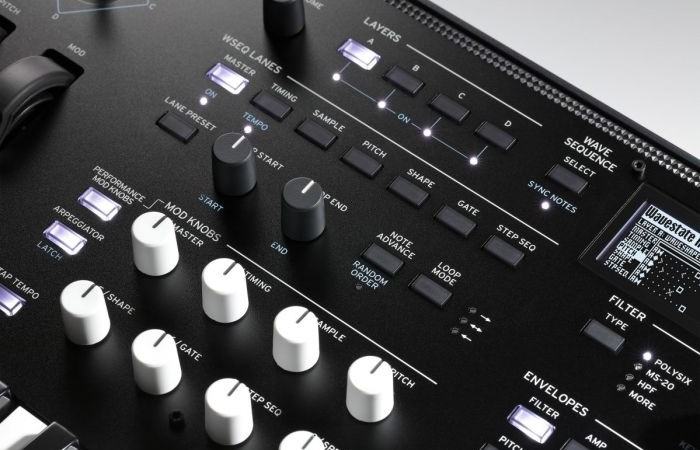
Check out these videos for our in-depth Korg Wavestate review and a wonderful demonstration of over 7 minutes of Wavestate sounds courtesy of Luke Edwards from Korg UK:
What Korg Synth is Best for Me?
Whether you opt for the Modwave or Wavestate, you’ll be guaranteed a hi-spec synthesizer loaded with features, and you can be sure to look forward to hours upon hours of experimentation.
The synth that you pick will come down to what you think would be most useful to your current setup and workflow - so think about what sort of sounds you want to create, and which type of synthesis would work best for you.
These synths also work great together, however - so there’s no reason that you couldn’t fit each of them into your productions!
The Modwave possesses the ability to modulate samples and waveforms that are phase-synchronous - this means they transition smoothly within the wavetable, creating new timbres that can be crossfaded continuously into other wavetables.
On the other hand, the Wavestation grants a better control over sampled sources in terms of using them together and generating complex sequences - something that is incredibly useful in certain scenarios and that you’ll be grateful for with different types of composition.
Still got some questions about Korg? Need to find the Best Synth on a Budget? Call us on 0151 448 2089 or check out your local store to speak to one of our Experts about your needs.


